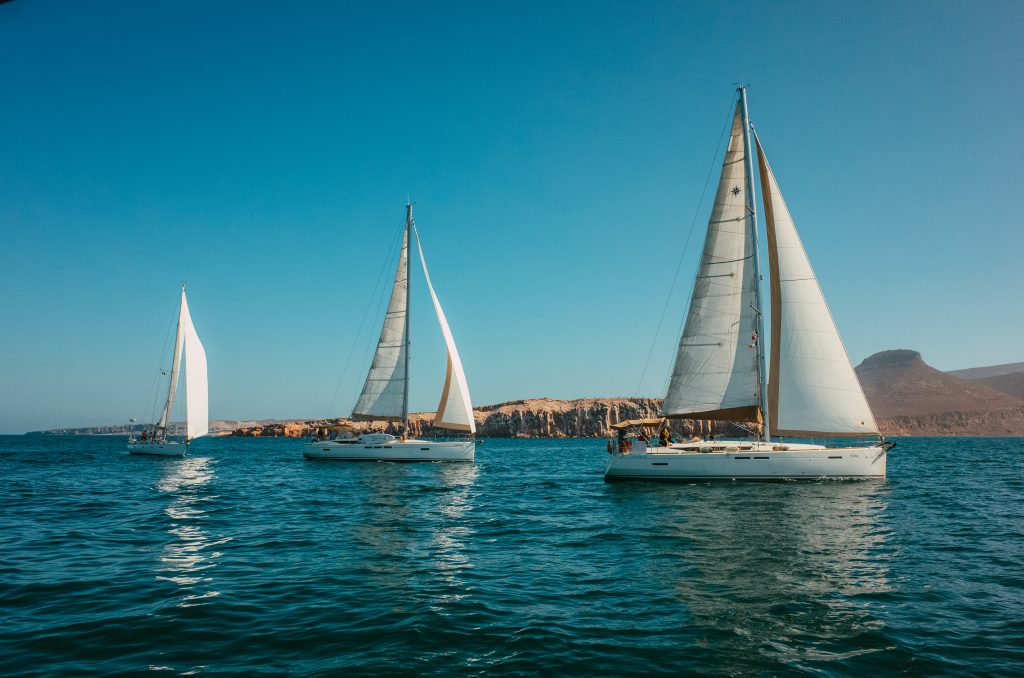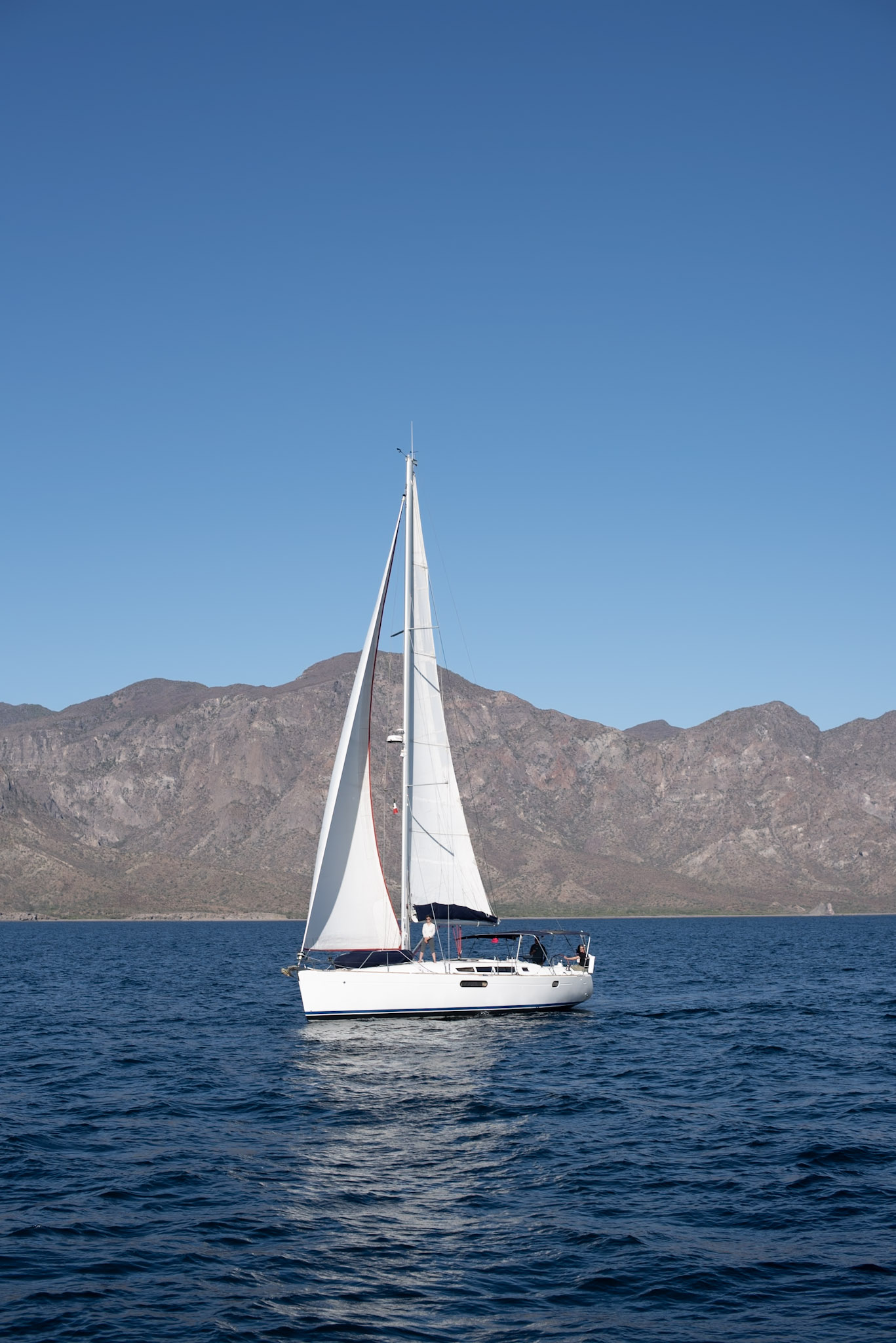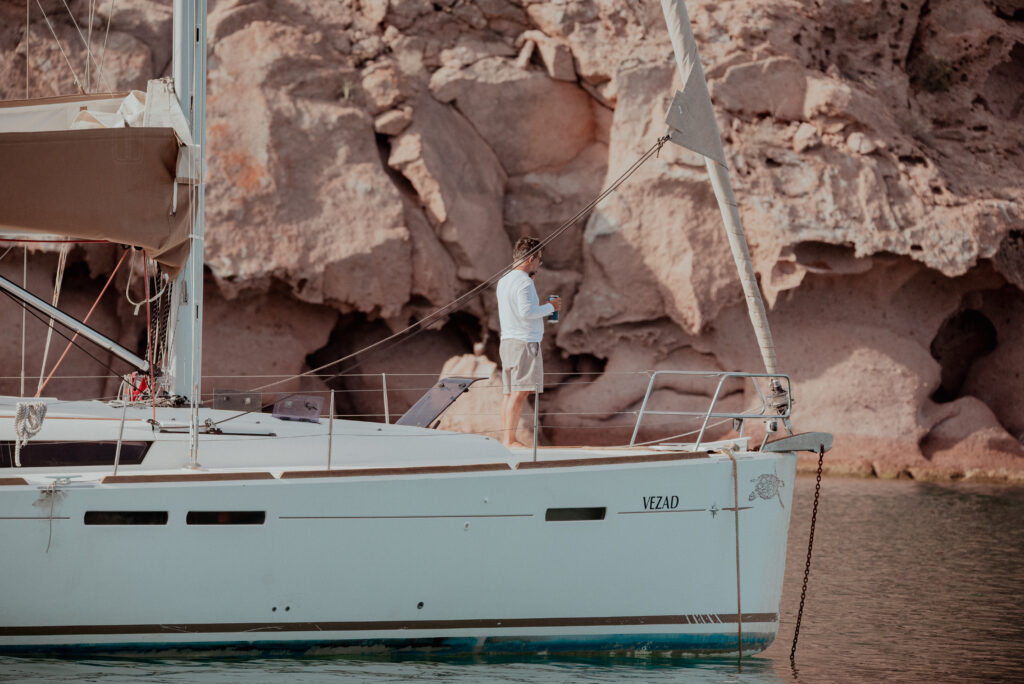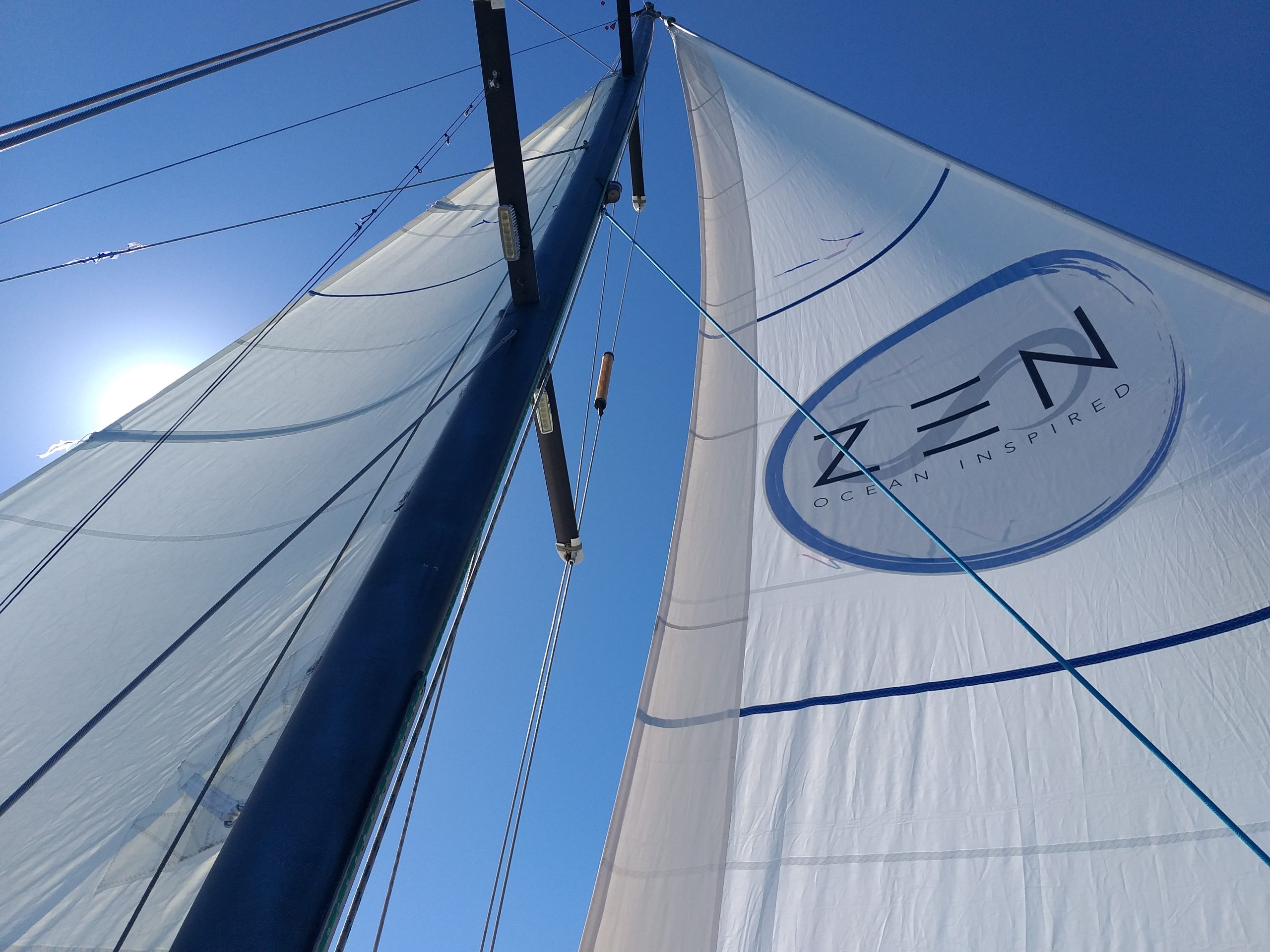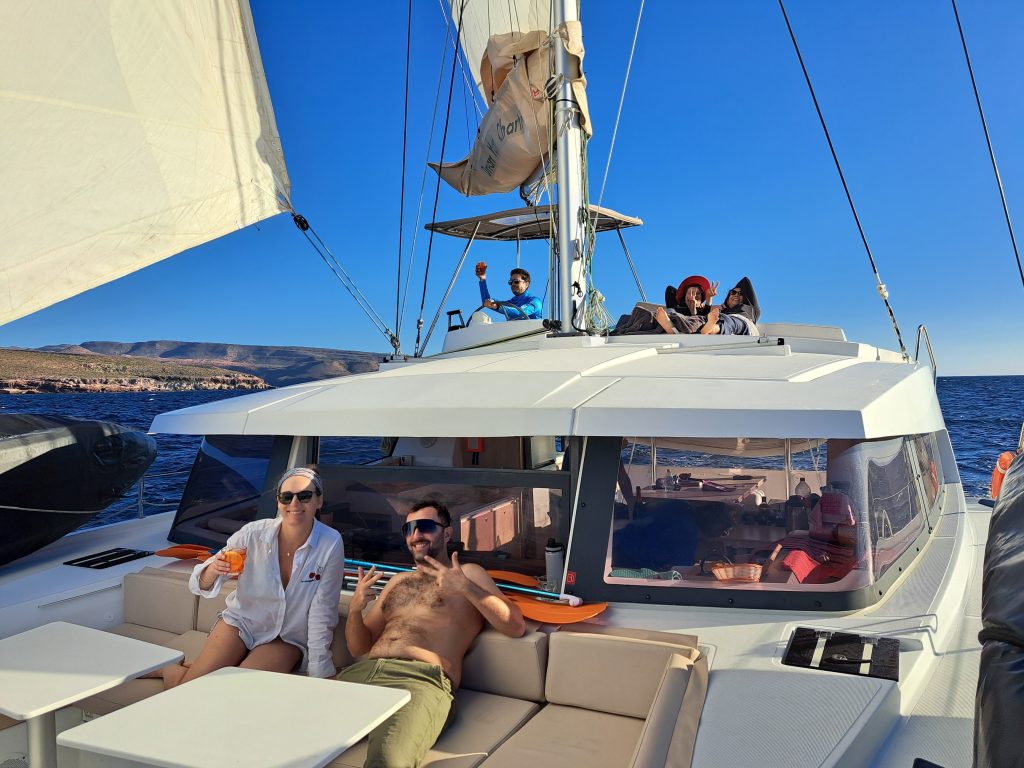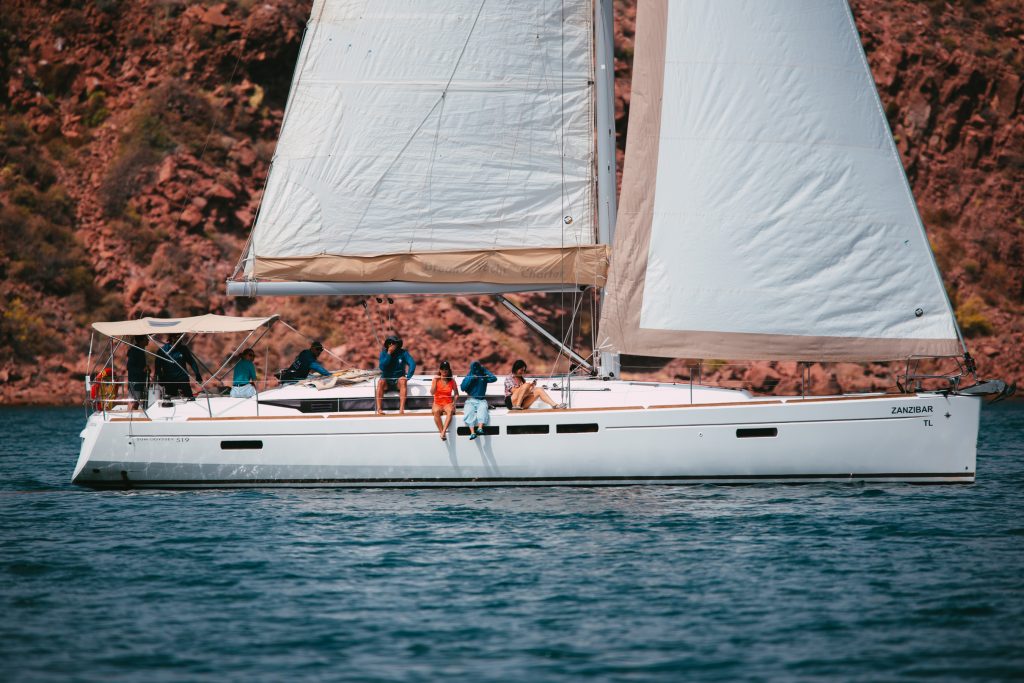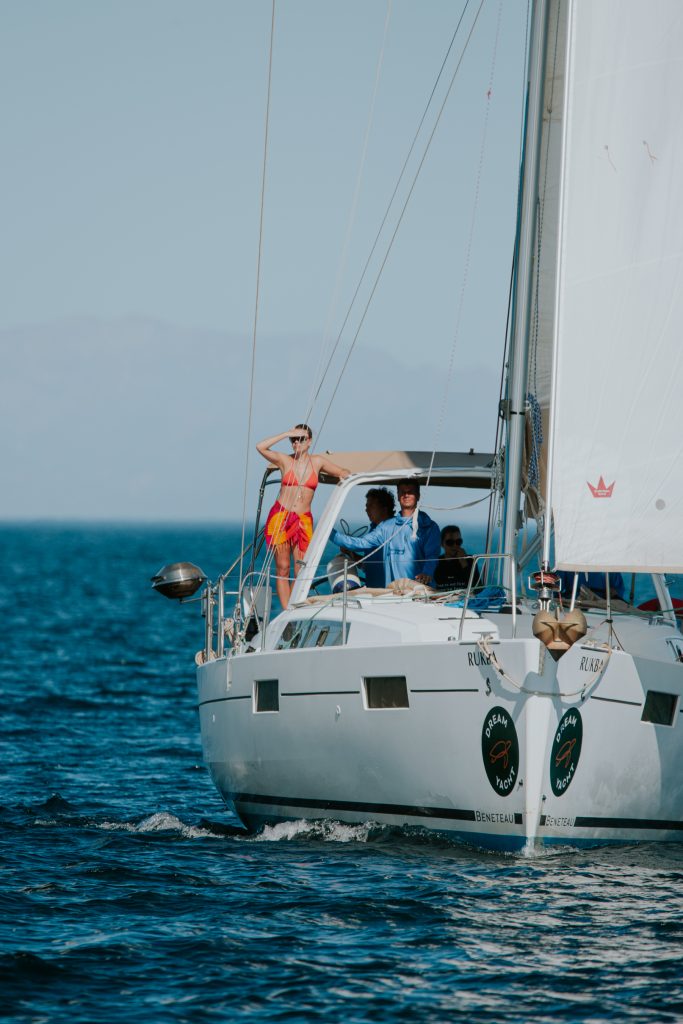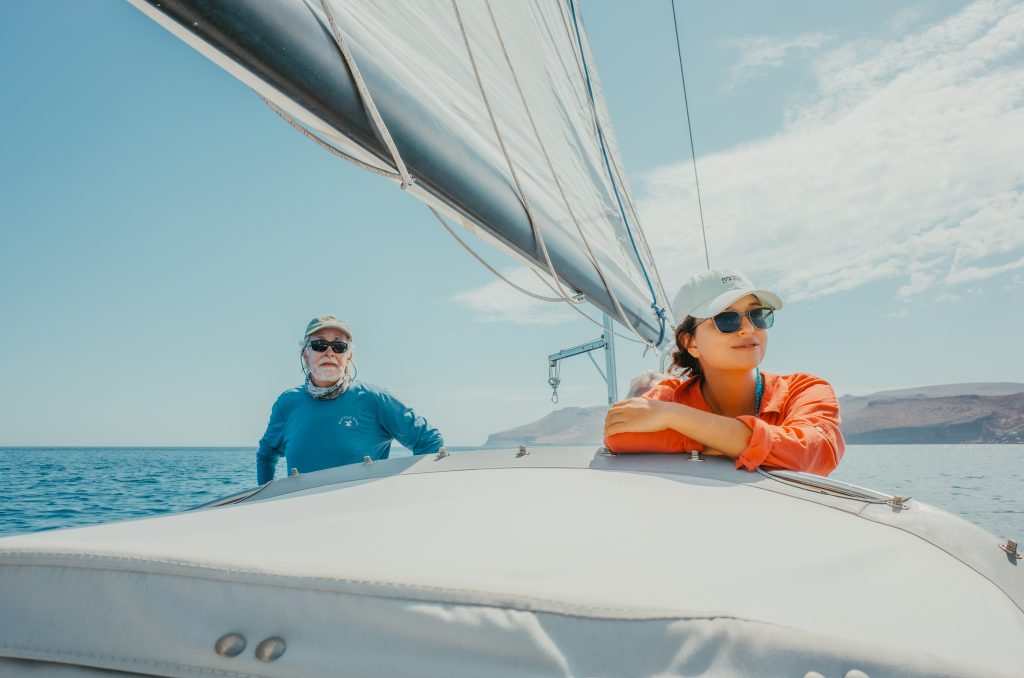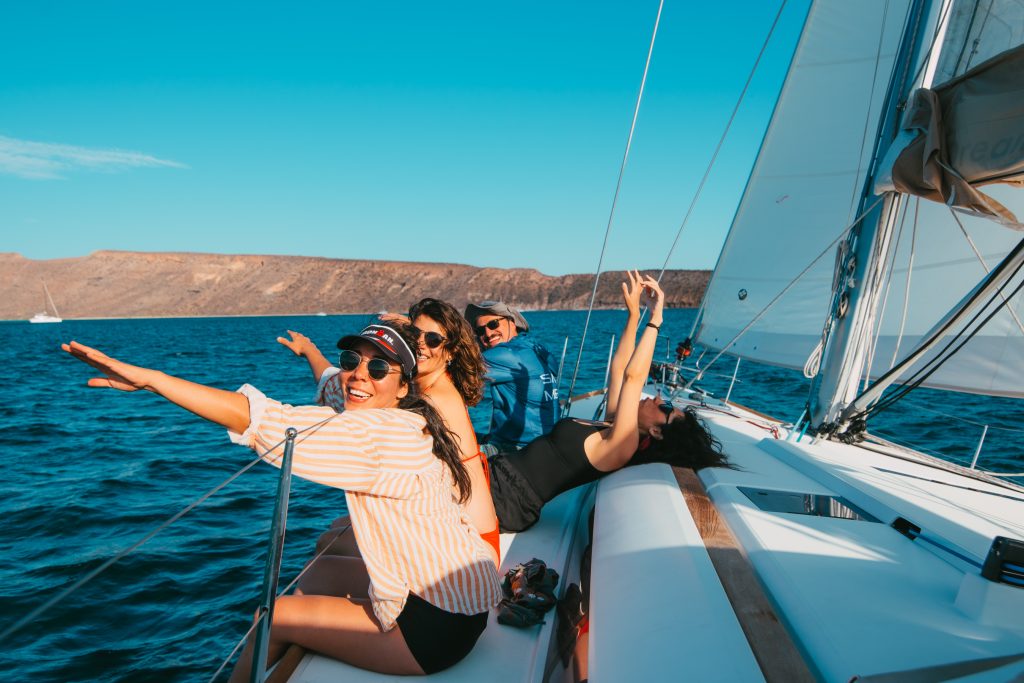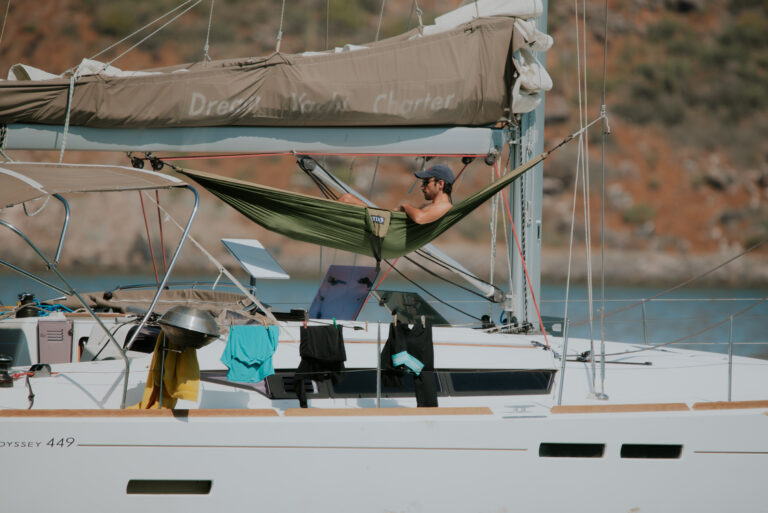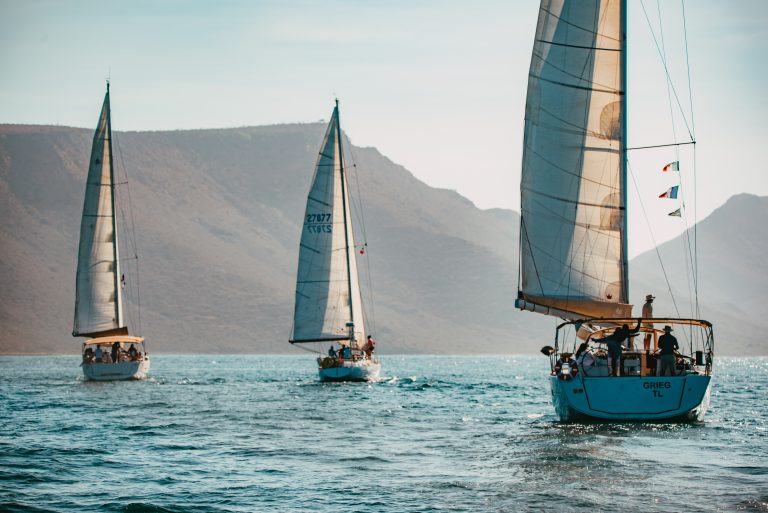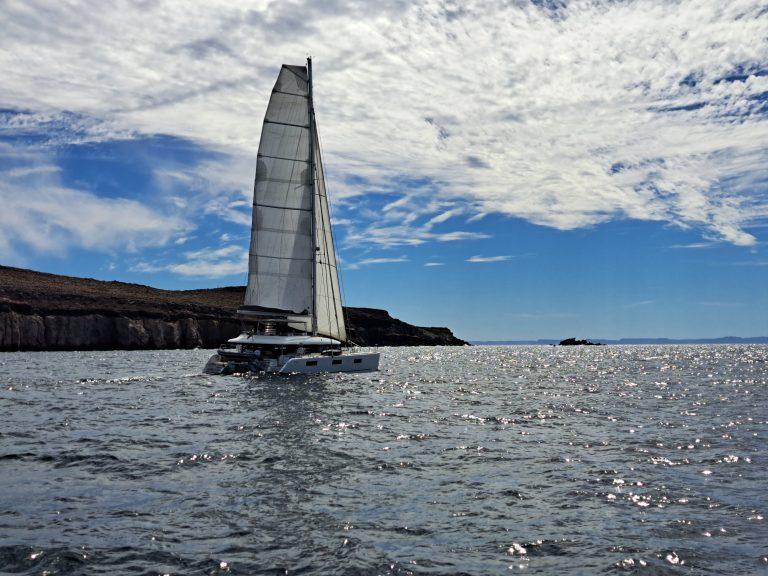Why Sail in Mexico Is Different: We Actually Sail — Not Just Motor Around
Introduction
Many tour operators in La Paz advertise “sailing” but run on engines for most of the trip. If you want to feel the boat heel, trim sails, and learn real seamanship, those motor-first tours aren’t what you’re looking for. At Sail in Mexico we do something different: whenever conditions allow we use wind as the primary means of propulsion. That choice shapes everything about our trips — from lesson plans and safety routines to pacing, wildlife encounters, and environmental impact. This post explains the practical differences you’ll notice on board, the benefits of true sailing, how we keep safety front and center, and how to tell whether a tour is actually sailing or mainly motoring.
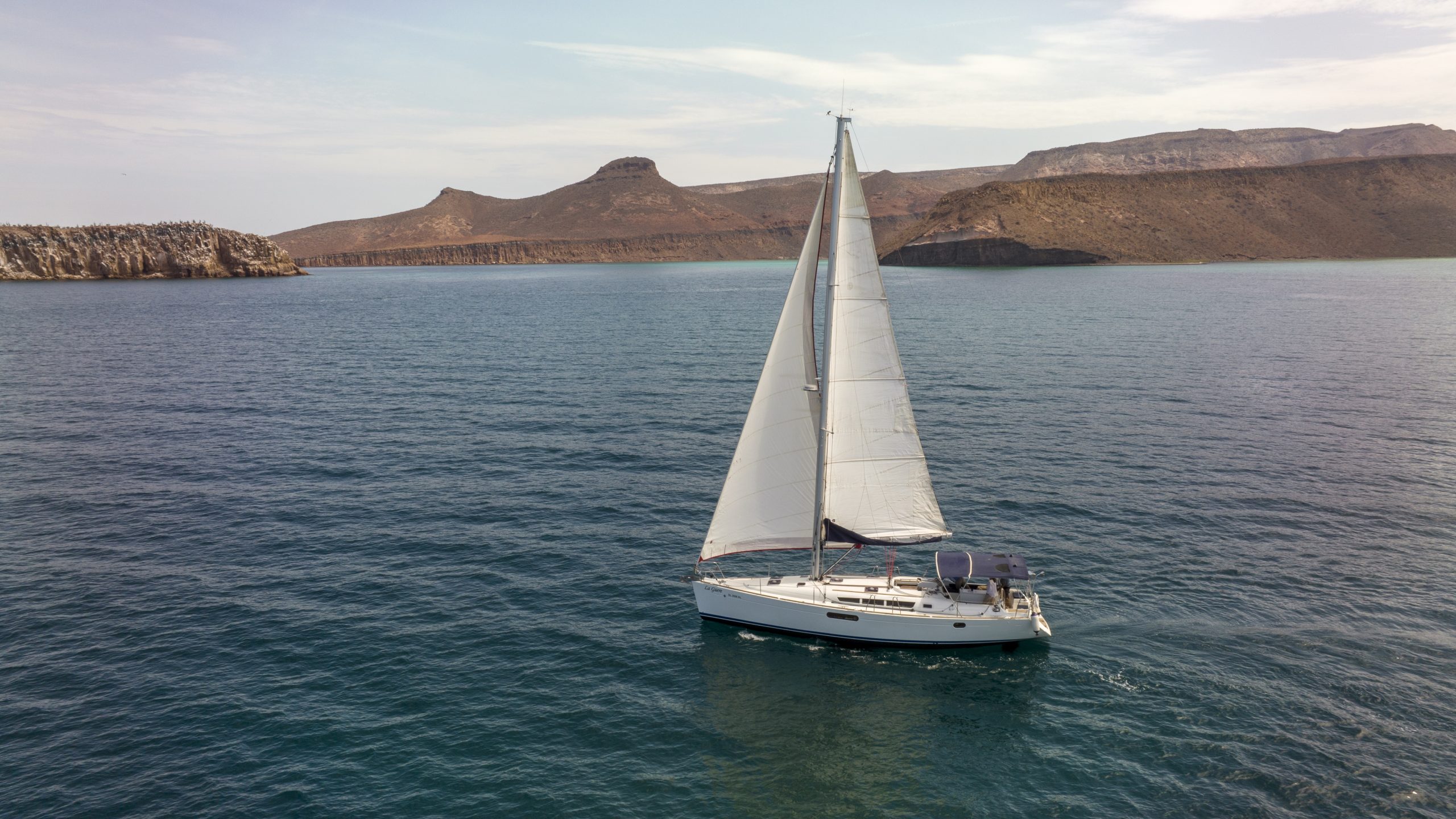
What “sailing” often means elsewhere in La Paz
Not all operators deliberately mislead; many use the term “sailing” because their boats have sails. In practice, however, a number of common practices make those outings motor-first:
- Engines on for the majority of passages; sails raised only for photos or brief moments.
- Rigid, timetable-driven itineraries that favor speed and schedule over wind conditions.
- Minimal guest involvement — seating for sightseeing rather than opportunities to handle sails or helm.
- Short day trips focused on snorkeling and shore visits, with sailing as a background element. Operators often choose this model for predictability (itineraries that won’t be disrupted by light winds), for guest comfort, and because it requires less training for crew. That approach is fine if your goal is a quick sightseeing cruise. It’s not ideal if you want to learn to sail or experience the rhythms of true sailing.
What “real sailing” looks like with Sail in Mexico
On our liveaboard courses and sailing holidays, sails are the first choice for propulsion whenever safe and practical. Key elements that define our approach:
- Wind-first navigation: We set sail and keep sails trimmed to maintain course and speed. Engines are a backup, not the primary drive.
- Hands-on learning: Guests are invited to participate — helming, trimming, raising and lowering sails, reefing, and basic navigation. Lessons are structured and progressive, tailored to experience level.
- Flexible itineraries: Rather than forcing a fixed route, we let wind direction and strength inform our plan for the day. That creates more authentic passages and the teaching moments that come with real sail handling.
- Liveaboard format: Multi-day trips give time to practice techniques, stand watches, and gain confidence under sail in different conditions.
- Small groups and experienced instructors: Low student-to-instructor ratios mean practical time at the helm and direct feedback from certified instructors with offshore and ISSA training.
- Sustainable practice: Less engine usage reduces fuel consumption and underwater noise, making wildlife encounters more likely and lowering environmental impact.
Tangible benefits of wind-powered trips
Choosing a wind-first operator changes the experience in ways you’ll notice immediately:
- Authenticity: You’ll feel the boat respond to gusts and shifts, learn to read wind and sea, and experience navigation driven by natural forces rather than engines.
- Better learning outcomes: Skills practiced under sail — trimming, helming, sail changes, sail handling under load — stick far better than theory or isolated land drills.
- Quieter trips and richer wildlife encounters: With engines off while under sail, marine life is less disturbed and sounds aboard are more peaceful.
- Lower fuel costs and reduced emissions: Practical benefits for both operators and the environment.
- Deeper connection to the place: Sailing encourages observation, slower travel, and appreciation for the Sea of Cortez’s landscapes and wildlife. We often hear the sea lions, dolphins and whales before we actually see them.
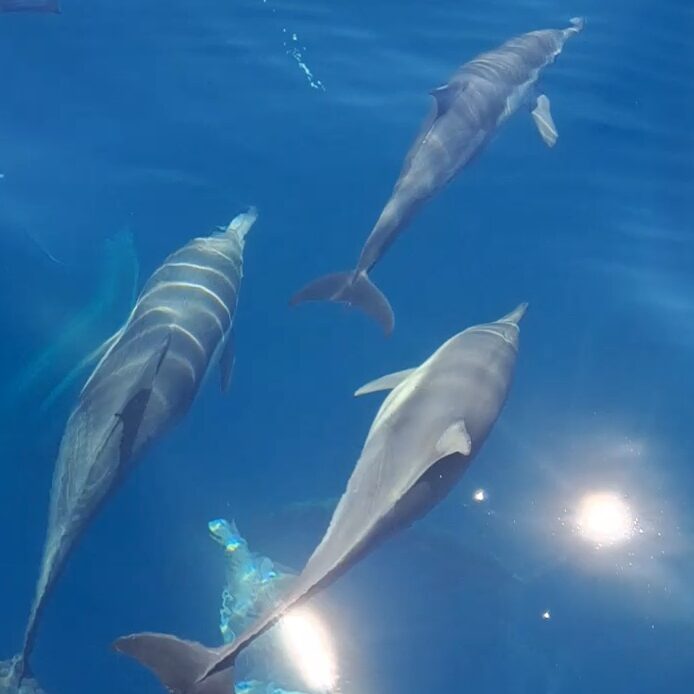
Safety, training, and when we use the engine
Prioritizing sail doesn’t mean taking unnecessary risks. Our safety practices are built around seamanship and preparedness:
- Certified instructors and documented courses: Our instructors hold recognized certifications (ISSA and equivalent) and extensive offshore experience. Course syllabi cover sail handling, navigation, VHF use, man-overboard drills, and emergency procedures.
- Regular drills: Man-overboard, reefing under pressure, emergency sail-handling, and abandon-ship procedures are practiced so the crew and students can act quickly when needed.
- Engine as safety backup: We maintain reliable engines, fuel systems, and redundancy in safety gear. When conditions are unsafe for sailing — extreme winds, hazardous seas, or for precise maneuvering like docking in tight slips — we use the engine without hesitation. Safety always overrides a desire to sail.
- Weather-first decision making: We plan around prevailing seasonal winds and up-to-date forecasts. If winds are light and a sail would be impractical for a particular transit, we’ll discuss options with guests — delay departure, adjust the itinerary, or use the engine if necessary.
- Transparent briefings: Before every trip we explain the plan, the likely amount of actual sailing, safety protocols, and how guests can participate.
Sample day on a Sail in Mexico trip
Here’s a typical day that shows how wind-first sailing shapes the itinerary:
- Morning: Early departure, raise sails after a safety briefing, guests rotate through helming and trimming duties while we sail to the next cove. Instructor leads short, focused lessons on sail trim and points of sail.
- Midday: Drop anchor in a protected bay under reduced sail; snorkel, eat, and relax. Crew may demonstrate reefing techniques or overboard drills, then invite guests to try.
- Afternoon: Short sail to an island with a wildlife viewing opportunity. Engine is used only if wind dies or we need precise maneuvering near shore.
- Evening: Sunset passage under sail when wind permits, or a gentle motor if conditions require. Night watch rotations introduced for liveaboard students.
How to tell if a tour operator actually sails
Ask straightforward questions and look for specific signals:
- Ask what percentage of passage miles are typically under sail vs engine.
- Look for course offerings and certifications (ISSA, RYA). Operators that teach sailing usually sail.
- Review instructor bios and crew experience — offshore experience and teaching credentials matter.
- Read reviews for mentions of helming, reefing, and hands-on learning instead of “boat ride” or “motor cruise.”
- Check photos and videos: long sail passages with full sail area raised, students trimming sails, and open-water heeling are good signs.
- Small group sizes and liveaboard trip lengths (multi-day courses) are correlated with real sailing experiences.
Who should book a motor-first tour vs a sail-first trip
Motor-first tours are:
- Ideal for travelers focused on quick sightseeing, shore stops, snorkeling, or for those who prefer a stable, seated ride.
- Good for tight schedules where strict timing is necessary.
Sail-first trips (Sail in Mexico) are:
- Best for people who want to learn to sail, practice seamanship, or experience wind-powered travel.
- Suited to guests who enjoy being active aboard, helping with sails, and spending multiple days living on the boat.
- Preferred by travelers seeking quieter, more eco-conscious trips and deeper wildlife encounters.
Frequently asked questions
Q: Do you ever use the engine?
A: Yes. Engines are used for docking, safety, or when weather makes sailing unsafe. Our goal is to sail whenever conditions allow.
Q: Are these trips suitable for beginners?
A: Absolutely. Our courses and trips are designed for all levels. Beginners receive structured instruction and gentle progression.
Q: What if the wind is too light to sail?
A: We plan trips around prevailing winds and may adjust the itinerary. If motoring is necessary, we’ll explain why and offer options.
Q: Can I still snorkel and sightsee on a sail-first trip?
A: Yes. We balance sailing passages with snorkeling, shore visits, and wildlife watching. The difference is that travel between sites is powered by wind whenever practical.
If you want a genuine sailing experience in La Paz — one where you’ll trim sails, helm in real conditions, and learn practical seamanship — consider joining a liveaboard course or sailing holiday with Sail in Mexico. Contact us to check recent wind logs, review sample itineraries, or see instructor CVs. Book a course or send an inquiry to learn when our next wind-first trip is available.

